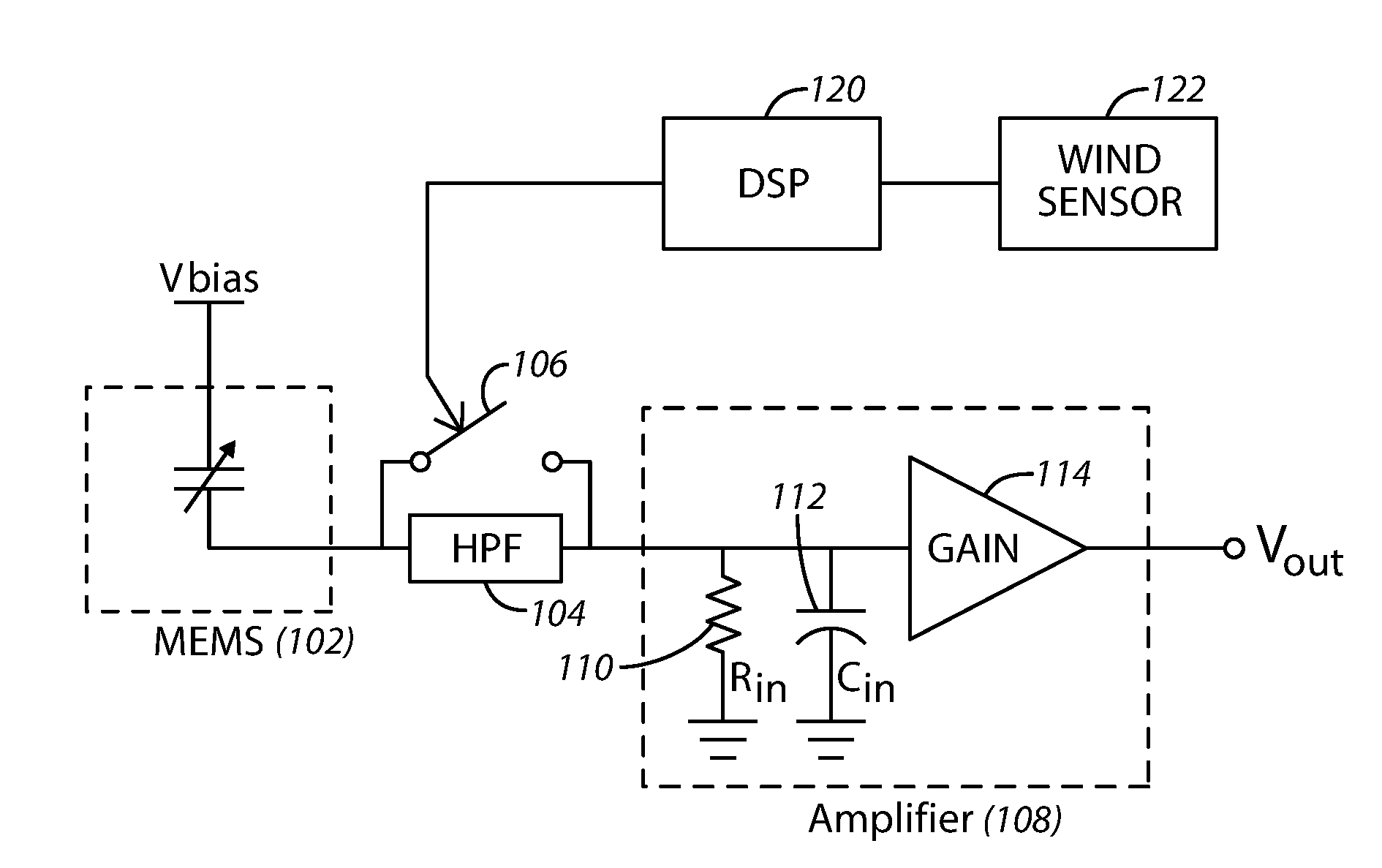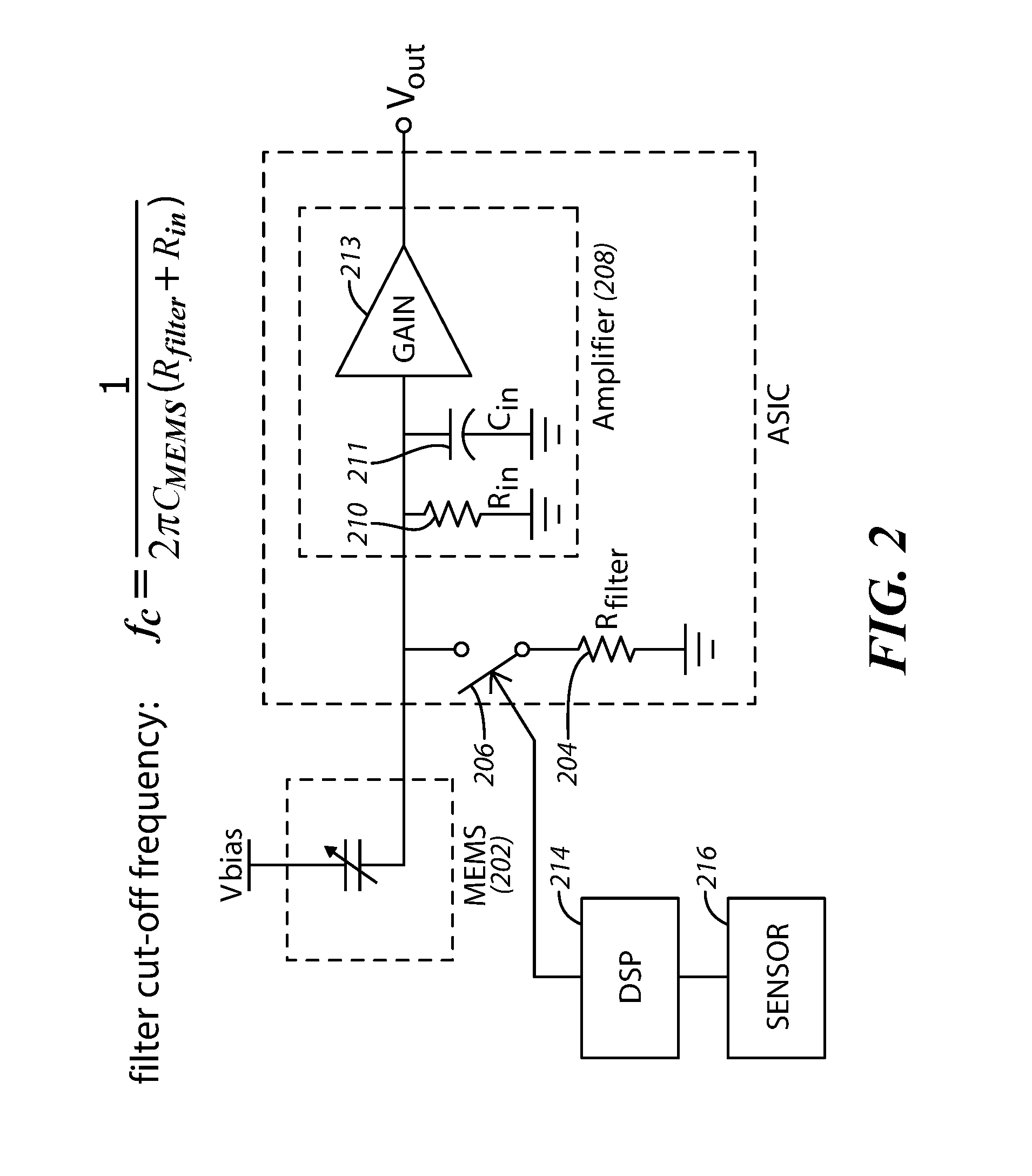Microphone With Electronic Noise Filter
a technology of electronic noise filter and microphone, applied in the field of microphones, can solve the problems of poor low frequency response, potential inability to hear or recognize the received signal, and large nois
- Summary
- Abstract
- Description
- Claims
- Application Information
AI Technical Summary
Benefits of technology
Problems solved by technology
Method used
Image
Examples
Embodiment Construction
[0015]The present approaches provide a switchable passive filter that is utilized before amplification of a received signal occurs. By “passive,” it is meant non-active components such as resistors and capacitors are utilized. In other embodiments, active components may be used. For example, a switchable active filter at the input of the microphone is provided. In one aspect, a micro-electro-mechanical System (MEMS) device receives a signal from a microphone. A switchable high pass filter (for example) is selectively utilized to act on the signal (or not act on the signal) before the signal is sent to an amplifier for further processing. The filter is only engaged in the circuit when wind noise (or other types of noise) is present. In one approach, a DSP may receive readings from an external wind velocity sensor or other wind sensing (or measuring) device. A signal is transmitted from the DSP to the switch that will either include or exclude the filter from the circuit based upon wh...
PUM
 Login to View More
Login to View More Abstract
Description
Claims
Application Information
 Login to View More
Login to View More - R&D
- Intellectual Property
- Life Sciences
- Materials
- Tech Scout
- Unparalleled Data Quality
- Higher Quality Content
- 60% Fewer Hallucinations
Browse by: Latest US Patents, China's latest patents, Technical Efficacy Thesaurus, Application Domain, Technology Topic, Popular Technical Reports.
© 2025 PatSnap. All rights reserved.Legal|Privacy policy|Modern Slavery Act Transparency Statement|Sitemap|About US| Contact US: help@patsnap.com



